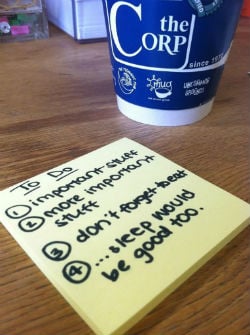Each year the IRS releases various “standard mileage rates” for taxpayers to use in computing the deductible costs of operating an automobile for business, charitable, medical or other purposes.
 At the beginning of this month the IRS issued Notice 2020-05 providing the new rates for 2020. The standard mileage rate for 2020 for transportation or travel expenses is 57.5 cents per mile for business use. This number is down slightly from the 2019 rate of 58 cents per mile.
At the beginning of this month the IRS issued Notice 2020-05 providing the new rates for 2020. The standard mileage rate for 2020 for transportation or travel expenses is 57.5 cents per mile for business use. This number is down slightly from the 2019 rate of 58 cents per mile.
To take advantage of the standard mileage rate in your business you simply multiply the number of business miles driven by the rate for the year. For example, if you drive 7,392 miles for your business in 2020 you would be able to claim a $4,250 deduction on your 2020 tax return. One thing to note is that using the standard mileage rate is not mandatory. A taxpayer is allowed to use the standard mileage rate OR the actual expenses of operating their automobile. However, you must choose in the first year you use the automobile for business which method you are going to use. You generally cannot switch methods each year.
The expenses that the standard mileage rate is meant to cover include all fixed and variable expenses such as the lease payment, gas, oil, insurance, license and registration fees, depreciation and other maintenance and repair expenses. If you choose to use the standard mileage rate instead of the actual expenses of your business, be sure you are not also deducting these expenses in your books or you will technically be “double dipping” and your reported auto expense will be overstated.
It should also go without saying, but if your car is used for both business and personal purposes, you are not allowed a deduction for the personal use miles driven. If you happen to be deducting your actual automobile expenses, you will still need to know the number of business miles driven so you can properly allocate your expenses between their deductible business and nondeductible personal use amounts. For example, a real estate agent, drives 16,000 total miles during the year, 12,000 miles for business and 4,000 miles for personal use. In this example the taxpayer can only claim 75% (12,000 ÷ 16,000) of the total cost of operating the car as a business expense.
SALY is not your friend!
 I have worked in public accounting for 13 years. Each year as I meet with my clients to review their tax information it’s clear that many are not as good at record keeping as they should be. When we get to the part where I ask them how many business miles they drove during the year, many times the answer is “What did I put last year?”
I have worked in public accounting for 13 years. Each year as I meet with my clients to review their tax information it’s clear that many are not as good at record keeping as they should be. When we get to the part where I ask them how many business miles they drove during the year, many times the answer is “What did I put last year?”
I reply “10,000 miles. Even”
To which they reply “That sounds about right. Let’s use the Same As Last Year (SALY) or SALY plus 10% if they think they drove a little more.
While your accountant might let you use this “estimated” mileage number in preparing your tax return, in the unfortunate situation where your return is being examined by the IRS this deduction will always be disallowed. When claiming a business deduction for mileage expense don’t ever fall into the SALY trap.
The auto and mileage expense deduction is one area that is especially important for taxpayers to keep an accurate record of throughout the year. There are a few deductions specifically identified in the internal revenue code that require special substantiation requirements, or proof, for them to be deductible. The deduction for business miles is one of the expenses identified as requiring “adequate records or sufficient evidence” (IRC Sec. 274(d)) in order to allow a deduction.
What constitutes adequate records or sufficient evidence?
Hopefully you are never blessed with an IRS auditor looking into your mileage deduction. But if you are, you will breathe a sigh of relief if you have kept adequate records and mileage logs from day one. To adequately appease almost any IRS auditor, if you have kept a contemporaneous mileage log that records a few simple detail you will most likely win the battle to keep your mileage deduction. The things to be sure you are tracking in your mileage log are:
- The date you are using your car for business
- The number of miles driven. This is probably best show as beginning and ending odometer readings
- The business purpose. For the business purpose you will want to include
- Who you met with or reason for the trip
- Where you drove or the location
While it’s not always easy to keep a contemporaneous mileage log, in todays world there are many apps and technology available such as, Mile IQ, to make tracking your mileage a breeze. If you are serious about keeping your business organized and want to be sure you are never disallowed a deduction you are allowed be sure you always know the current standard mileage rate and are keeping a contemporaneous mileage log.
















